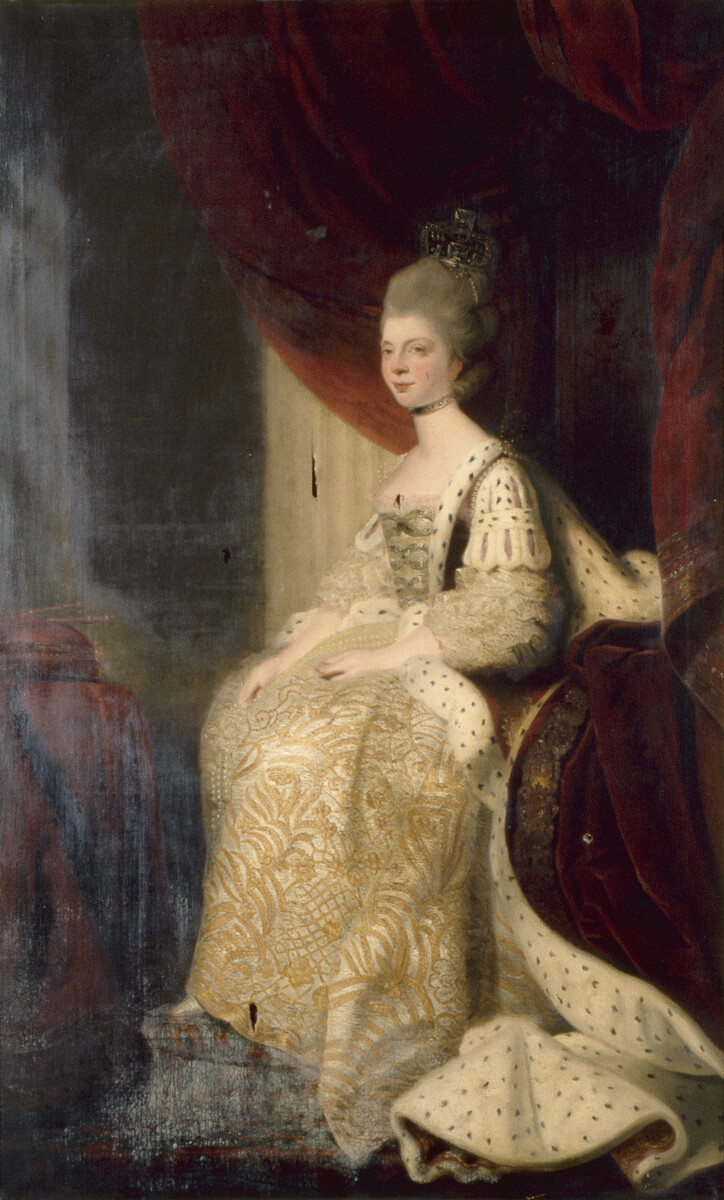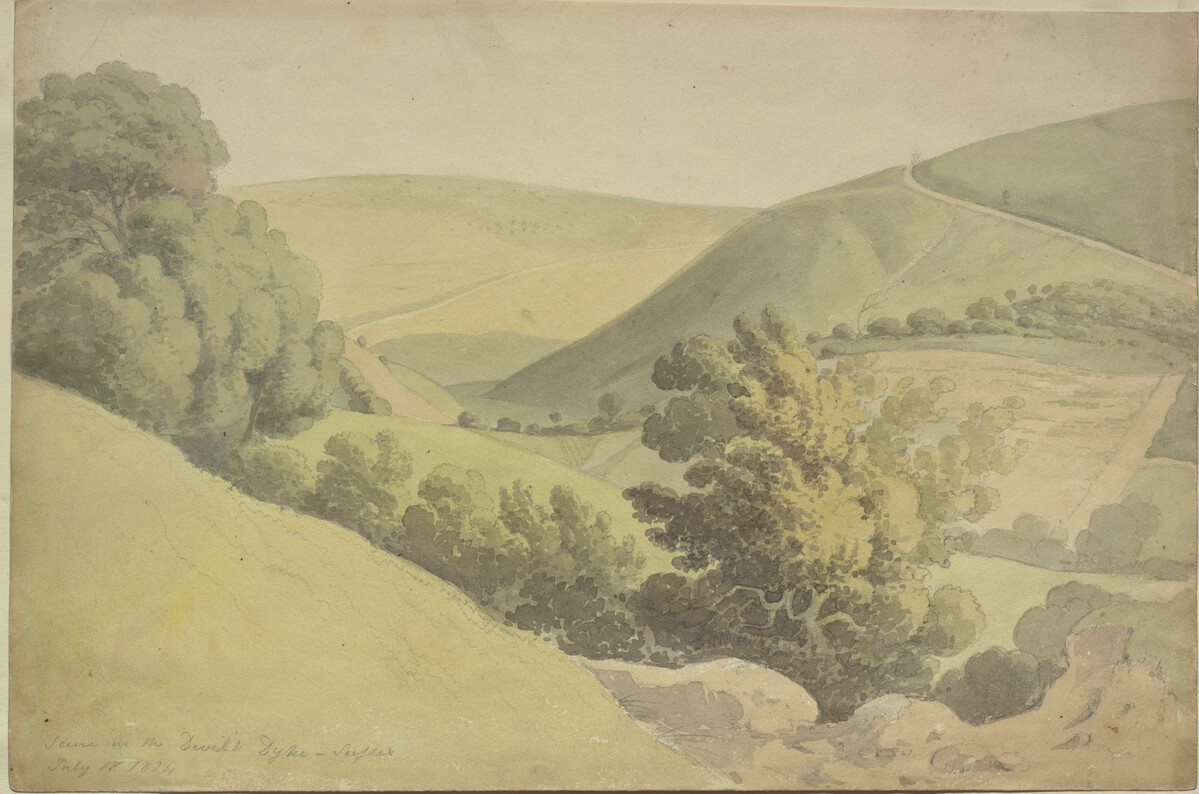Queen Charlotte visits Brighton. October 1814.

On a dark and stormy night of the 23rd of October, 1814, the Prince Regent arrived at his Pavilion in Brighton, ahead of his mother, Queen Charlotte.
She was due to arrive the next day, along with the Regent’s Royal siblings. The Pavilion was entirely given up to the Queen for her stay whilst the Prince Regent stayed at a house, just to the South, previously occupied by General Hammond.
Monday, 24th October.
At 4.30pm the next day, trumpets announced the arrival of Queen Charlotte, along with the Princesses – Elizabeth, Mary and Augusta.
The Military took their stations near the North Gate of the Pavilion, and performed the National Anthem as their carriage approached. As they passed, the immense gathering of inhabitants cheered.
At 5 o’clock a salute of 21 guns was fired from a brig stationed off of the West Cliff. Dinner was prepared for seven o’clock, where after the Prince Regent’s band played several overtures. When dinner was over, a card party began and later fireworks were displayed on the Steyne.

Tuesday 25th October.
The following morning, crowds gathered on Marlborough Place, waiting for a glimpse of the Queen.
The Prince Regent had spent the morning with the Queen and his family, showing them the Royal stables, after which they returned to the Pavilion for lunch.
At 2.30pm, the gates were thrown open and exited a carriage and four a carriage and four -the Queen, Prince Regent, and the Princesses Elizabeth and Mary. Another also left carrying Princess Augusta.
The Dukes of Kent and Clarence subsequently followed on horseback through the opposite gate and an immense cavalcade of carriages and equestrians succeeded them.
The Queen was dressed in a purple pelisse, and an Oldenburgh bonnet whilst the Prince Regent wore a brown coat, kerseymere breeches and gaiters. The Princesses were plainly but elegantly dressed.
The Royal procession travelled around by the stables, then the theatre, up North Street, down West Street, and finally along back to the Steyne.
Afterwards they alighted their carriages and walked up and down the Steyne, the Queen arm in arm with the Prince Regent, followed by the Dukes of Clarence and Kent with the Princesses, and other nobility.
The sound of ‘huzzas’ from the inhabitants filled the air. As the Royal Party passed the brick pavement of the Steyne, the crowd were cleared for them to be able to walk along it. The Royals walked the Steyne three times before returning to their carriage.
Such was the vastness of the crowd, they were unable to. But, the Queen smiled, and signified to the Prince Regent that they would instead walk back to the Pavilion across the lawn and through the Palace gate.

Wednesday 26th October.
A little after one o’clock, the Queen, the Prince Regent, the Princes and Princesses, left the Pavilion to visit the Earl of Chichester at Stanmer House.
The yeomanry were drawn up in the park. They arrived just after two o’clock, where they were shown to a large room, and ate breakfast consisting of fruits and a numerous collection of dishes. After breakfast, the Royal party were shown around the mansion and walked through the gardens.
Once their visit concluded, the Prince Regent returned on horseback at four o’clock, shortly followed by the Queen and Princesses.
During the evening, the Queen held a tea party at the Pavilion, followed by a concert that lasted until two o’clock in the morning.

Thursday 27th October.
Early afternoon, the Queen and two of the Princesses, left the Pavilion by the South Gate, passing up through North Street, down West Street, along the cliff-side to Hove.
The Prince Regent, Duke of Kent and several other nobility followed on horseback. They travelled as far as Copperas Gap and Kingston by Sea, when they next turned and passed by Buckingham House, the residence of Mr Harry Bridger.
They then crossed the Downs and arrived at the prince’s Dairy, at Preston, where the Royal Party stopped for a cold tea, supplied by the Pavilion.

Friday 28th October.
On this day, the Queen and the Princesses, took an airing out on the Downs.
The Prince Regent, Duke of Kent, General Bloomfield and other nobility, again followed on horseback passing up Church Street.
One of the Regent’s servants’ horses, became restless and threw the rider off his horse, who was stunned by the fall. The Prince Regent, anxious for his welfare, ensured he was given the full attention needed before setting off to join the Queen.
The Queen and Princesses were delighted with the views from Devil’s Dyke. The Prince Regent pointed out the villages and noteworthy landmarks to them.
By 3.30pm the Royal party had returned to the Pavilion.

Saturday 29th October.
Queen Charlotte and the Princesses left Brighton for Windsor, after thoroughly enjoying their stay with the Prince Regent.
But before their departure back to Windsor, the next morning, Queen Charlotte donated £50 to be distributed among the poor of the town.